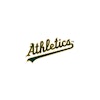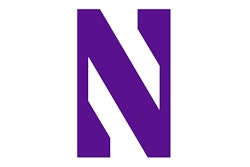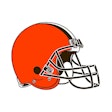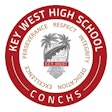Keeping infill synthetic-turf fields at their peak appearance and performance requires at least some periodic attention.
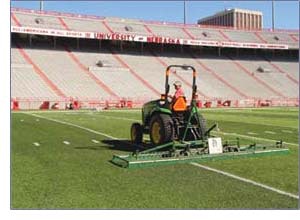 Turf maintenance at the University of Nebraska's Memorial Stadium
Turf maintenance at the University of Nebraska's Memorial Stadium
But even Anderson realized his natural grass was living on borrowed time. The field was hosting some 90 events each academic year, and though Anderson's annual handiwork had the turf looking pristine by the end of August, it was often much worse for the wear only months later. No amount of overseeding could compensate for the overuse. "As long as they kept wanting to bring in the same number of events, we had to look at something else," he says.
Now Hempfield's stadium turf is something else altogether, and so too is Anderson's maintenance burden. Instead of mowing the grass field at least twice -- and often three times -- per week, he now drags a broom over his synthetic turf at most once a month. The semiannual aeration schedule and late-fall placement of a growth cover have been rendered obsolete. Thanks to inlaid game lines for both football and soccer, biweekly, all-day painting sessions, likewise, are a thing of the past. The application of fertilizer five times a year? Forget about it.
The day-to-day care of the stadium field has gotten so simple, in fact, that to accommodate the Black Knights' football season opener Sept. 2, all Anderson had to do was place pylons in the end-zone corners. Then, for a soccer game played on the same surface 24 hours later, he pulled the pylons and wheeled soccer goals into place. "It's not like a natural field, where you have to fill in divots and irrigate it to get it back into shape," Anderson says of the quick and carefree turnaround.
Anderson still gets his natural-grass fix from 17 game and practice fields on the Hempfield campus, and now that the stadium field has gone synthetic, he has more time to devote to upgrading the others. But an especially dry Pennsylvania summer and fall hampered his efforts, and that has resulted in even more events -- including twice as many soccer games as originally scheduled -- shifting to the stadium. "We're in the process of evaluating every field. Hopefully, we're going to upgrade our natural-grass fields over the next four or five years with better grading, turf and irrigation," says Anderson, adding, "We may even add some more infill fields."
While infill synthetic turf does substantially lighten the workload of field maintenance professionals -- and while many infill systems may perform quite satisfactorily with little or no attention beyond installation -- regular, careful maintenance of synthetic turf has become standard procedure. Even manufacturers who once marketed their products as "maintenance-free" have come to realize that as infill systems evolve, so must their ongoing care.
Many measures used to keep these fields looking their best and performing at their peak are preventive in nature. Owners are encouraged to set policy and post signs prohibiting the chewing of gum, spit tobacco or sunflower seeds on the surface; establish rules limiting acceptable footwear to rubber cleats, turf shoes or sneakers (metal spikes should be allowed on synthetic turf only on baseball fields with clay mound, plate and base cutouts); position an adequate number of rust-proof trash receptacles near spectator seating areas and along player benches; and locate player refreshment stations off the surface entirely. In addition, spare sections of infill-free turf pile can be used to protect bench areas from excess wear and drink areas from accidental spills. Some facilities also place welcome mats at field entry points to help players and coaches remove foreign matter from their shoes before it can be introduced to the infill.
Inevitably, though, spilled sports drinks will coat white sideline turf fibers with colored residue, and wind-blown peanut shells will gravitate toward infill granules. Weeds may even awaken in this most unlikely, unnatural bed. Most turf manufacturers recommend clearing the field of debris as often as needed, and many grounds professionals have gotten into the prideful habit of hand-picking debris from their infill systems whenever they set foot on them -- even if it's while traversing the field on their way to some other task. More-involved spot cleaning may entail the manual removal of chewing gum, after first hardening it with cold water, ice or a freezing spray (in worst-case scenarios, stubborn gum can be snipped free of the fibers). Spills should be flushed with water immediately to mitigate the risk of staining, and perhaps cleaned with a mild household cleanser. Weeds should be treated with biodegradable weed killer. Before introducing any chemical agents to their turf system, however, field maintenance professionals should consult with the turf's manufacturer regarding what exactly is applicable (as well as how often and in what concentration), so as not to damage the field or risk voiding its warranty.
Human waste products such as blood, sweat, saliva, vomit and urine (a visiting NFL team once used a sideline tent for relief during practice on a domed game field) are treated much like they would be on natural grass. Infill systems are actually much better at handling high volumes of irrigation and rainfall, and thus are more efficient at flushing away such waste (even clay that has strayed into the infill on synthetic-turf baseball fields can be washed through the system). If necessary, mild detergent solutions or turf-specific disinfectants -- available through turf paint companies -- can be used to spot-clean turf. Indoor fields, which typically aren't constructed to accommodate large quantities of water, may require more careful cleaning attention.
Concerns about infill becoming a breeding ground for bacteria, even in humid indoor environments, have so far proved unfounded. "The crumb rubber from the tires is giving off zinc and sulfur, both of which are bactericides and fungicides. They both have a negative effect on microbes," says Andy McNitt, the Penn State University associate professor of soil science who is in the midst of a well-publicized, multiyear study of synthetic turf. "Especially outdoors, I really don't expect to see much living there."
Other products designed to ensure a surface's peak appearance and performance are restorative in nature. One company has introduced within the past year a comprehensive line of post-installation treatments new to the synthetic-turf industry. These include a pigmented mist that restores color to faded turf and a clear-drying, acrylic-based coating that rejuvenates matted fibers. The latter can also be used to adjust a surface's playability characteristics -- allowing for ball-roll variances between soccer and baseball, for example -- either permanently (one application per year) or on a game-by-game basis.
Meanwhile, many pieces of hardware -- including sweepers, groomers and backpack leaf blowers -- exist to tackle bigger, more regular surface maintenance jobs. Lawn sweepers are effective at gathering leaves, wrappers, athletic tape, bandages and other large debris from the turf surface, without displacing significant amounts of infill. Some innovative grounds professionals have even taken the added measure of replacing the bottom panel of their sweeper hamper with a screen, allowing any infill granules to sift back through to the field.
Sweepers come standard with many turf system installations. Same goes for groomers, which likely incorporate nylon brooms (in widths ranging from 5 feet to 5 yards) and rows of spring tines on a wheel-mounted hydraulic unit dragged behind a tractor. Used separately or in tandem, the brooms and tines help clear the field surface of finer debris (such as peanut shells), evenly distribute displaced infill (particularly between the hash marks on a football field and around the corner-kick and goal-mouth areas on a soccer field) and return matted-down fibers to a more upright position. Debris also can be blown off the field or concentrated into areas for pickup using a leaf blower, providing a moderate setting is used and the wand is not aimed close enough to the infill to begin moving it, too. In addition, some field maintenance professionals have employed magnetized sweepers to pull any discarded metal objects from the turf.
As much as infill systems successfully mimic the look and feel of natural grass, there are some maintenance challenges unique to their makeup. The infill itself, which is largely composed of crumb rubber from recycled car tires (nearly 300,000 pounds of rubber, or roughly the equivalent of 16,000 tires, is found on the typical 85,000-square-foot multipurpose field), can be pungent -- a situation commonly addressed by spraying the field with a 100:1 or 50:1 mix of water and fabric softener. This dilution not only lends a fresher scent to the surface, but also succeeds in reducing the static often associated with new installations and those found in dry outdoor settings. Static may cause infill granules to migrate up the turf fibers or cling to players' uniforms -- particularly their shoes and socks. In anticipation of nationally televised University of Nebraska football games, John Ingram, the school's director of facility operations, often uses diluted fabric softener only on the 6-foot-wide white border surrounding the playing field at Memorial Stadium. "That's purely aesthetic; it has nothing to do with the performance of the field," Ingram says. "I do that so the white border stays beautifully white the whole game."
While the technology exists to produce colored granules, their manufacture is widely regarded as cost-prohibitive. And because at least some black infill is typically exposed to the sun's rays, the temperature of any given playing surface can surpass that of the surrounding air by 20 to 40 degrees. For that reason, many facilities are equipped with portable water cannons or in-ground sprinkler couplings along their sidelines to facilitate field irrigation and help control both static and temperature. According to Ingram, 20 minutes of irrigation can reduce field temperature by 20 degrees, and it may take hours for the temperature to return to its pre-irrigation starting point.
Water may also be part of a field's normal grooming regimen -- as a means to expedite the settling of infill in a new installation or to tweak an existing field for faster play. This is especially true for systems in which both rubber and sand comprise the infill, and when irrigation is followed by rolling the field with 2,000-pound rollers. "What's kind of nice about these systems is that we can firm them up or loosen them up just with our grooming techniques," says Ingram, who conducts G-max tests weekly on the Memorial Stadium field, as well as two infill practice fields, to ensure consistency. "Our head coach likes the field firm and fast. To get it to play faster, we brush the field, water it and roll it."
Conversely, rubber/sand fields exposed to a lot of rain, not to mention near-constant use, need their infill to be stirred up regularly to avoid migration of sand to the bottom of the system, where it may begin to compact. Several methods have been tried, including the type of high-pressure water jets sometimes used in the overseeding of natural-grass fields. One groomer currently on the market employs a series of evenly spaced spiked wheels that, when properly weighted down and slowly dragged, vertically penetrate and loosen the infill without damaging turf fibers. This groomer can work in tandem with a trailing series of tines to further redistribute the infill and redirect the fibers.
Manufacturers recommend infill grooming every six to eight weeks, but end users such as John Wright, director of facilities and fields for the Seattle Seahawks, may opt for an as-needed approach (Wright says he needed to use the spiked-wheel groomer on Qwest Field only twice last season). Mike Reisenauer, maintenance and sports turf manager at Washington State University, expedites the process by pulling a combination of three infill groomers behind his utility vehicle at once. A second hitch even allows for the attachment of a broom-and-tine groomer, if desired. "It is a load, but I can do a whole field in less than 45 minutes," Reisenauer says.
Some manufacturers -- namely those of all-rubber systems -- insist that brush grooming alone will properly reposition infill and fibers, and thus don't recommend the introduction of tines and other aggressive implements to the field. That said, manufacturers of turf, regardless of its infill composition, agree that excessive brooming alone can prematurely age a field. Most fields installed to date consist of slit-film polyethylene fibers designed to separate into multiple strands over time and under normal play and maintenance. Brooming such a field more often than the recommended four to eight weeks certainly won't render the field unplayable, but it will hasten the fibrillation process. Newer fibers designed to limit fibrillation have been introduced to the marketplace within the past two years, and thus are considered more resilient to aggressive grooming techniques.
Manufacturers and end users may differ on proper patterning when grooming an infill system. Some say a second round of passes made perpendicular to the first are needed to adequately brush the field and evenly distribute its infill. Others, including Wright, suggest making only passes parallel to yard lines, so as not to skew their appearance. Qwest Field may get groomed in both directions before paint is applied, but before Seahawks games it is brushed and tined sideline to sideline in opposite directions every five yards -- not once, but twice -- "to burn the pattern in," Wright says.
In some cases, additional rubber may be required of a system after play, rain and gravity have settled the infill (perhaps by as much as a quarter-inch) over the course of a season or more. During the past off-season, a new topdressing of rubber was applied to five-year-old Qwest Field, which didn't receive its final layer of infill at installation, per the request of facility operators, who opted instead for greater fiber exposure. However, with natural settling of the infill, the field was becoming too firm, according to Wright, who first tried to fluff up the infill with water jets and tines. However, it wasn't until a quarter-inch of infill was added to bring the system to a full 2-inch depth that Wright began seeing satisfactory G-max readings. "We probably over-thought it at first," he admits. "Then we just came in with a traditional rubber topdressing, groomed it in and it's beautiful. It's perfect."
Owners of synthetic-turf fields must concern themselves not only with what is put on their fields, but what they must take off. Because Qwest Field is home to numerous sporting and special events -- from art walks to motocross races -- it was constructed as a solid-green surface free of any of the tufted white lines and inlaid logo graphics common on today's installations. Therefore, among the greatest challenges facing the Seahawks' facility maintenance staff is the application and removal of paint -- whether it's to shift football hash marks to meet pro and college specifications or to switch the entire field's markings from football to lacrosse. According to Wright, Qwest Field crews have abandoned the approach of power scrubbing and flushing erasable paint down through the turf system because paint residue began to build up in the infill, particularly in the end zones.
Today, wand-mounted, 21-inch-wide carpet vacuums are used to remove painted lines and hash marks from Qwest Field while removing a surprisingly scant amount of infill (even less than is removed during normal grooming, Wright says). At least one paint manufacturer has developed a prototype riding paint remover -- essentially a lawn tractor with its blades replaced by spinning water jets -- that washes, brooms and vacuums the turf. An entire professional football field's existing paint -- including yard lines, hash marks, 6-foot-wide boundaries, numerals, and midfield and end-zone graphics -- can be erased by one such machine in roughly 16 hours. Other machines currently available may incorporate rotating brushes.
Turf manufacturers and end users alike gush over the quality of today's synthetic-turf-specific marking paints -- whether erasable or permanent (one application per season). Over-the-counter aerosols used by vandals, however, may require some hands-and-knees, soap-and-water attention. Particularly stubborn marks can be removed using diluted turpentine and stiff brushes (some end users even use wire brushes), so long as it is done judiciously and with the turf manufacturer's consent, while keeping in mind that infill displaced during the cleanup process will need to be returned and the entire area adequately flushed with water.
A second common form of synthetic-turf vandalism -- arson -- often requires a return visit from the turf's manufacturer. Burns caused by cigarettes, matches or other small combustibles may result in so little visible damage as to not require repair. However, when fueled by sufficient amounts of accelerant, fire can cause enough damage to an infill system to warrant professional expertise. Repair techniques can range from simply trimming singed fibers to removing the infill from more severely damaged areas, shearing burnt fibers down to their backing, gluing an inlay of new turf onto the old backing, replacing the infill and trimming the inlay fibers to a height uniform with the rest of the field. Others responders may choose to completely cut out the turf backing and apply new turf and new seams. In any case, it is recommended that turf scraps left over from installation be used for such repairs, whenever possible, since the turf will all be of the same production lot and thus represent the best possible match.
Of course, there are other forms of intentional physical damage, too. A scavenger hunt encouraging participants to tear out a piece of a local high school's synthetic-turf system required that field's manufacturer to return to the site and treat the repairs much like it would the inlaying of hash marks. Considering that there are 320 hash marks on a football field, it's also possible that an inlay can come unglued and loosen under normal playing conditions. In this case, a shop vac is used to remove infill (including any that has migrated under the loosened inlay), new adhesive is applied, the inlay is repositioned and the original infill returned. Weighting down the inlay with a sandbag or something of similar heft overnight helps ensure a secure repair.
While fire and other forms of vandalism remain rare, far more facilities are likely to face the challenges Mother Nature throws at them. A key concern when removing snow from an infill synthetic-turf system is to spare the infill itself. Truck- and tractor-mounted plows and snow throwers, as well as walk-behind snow blowers, can be used to clear a field covered in snow, so long as they provide adequate clearance above the infill material. If a game is not pending, cautious field operators can set their plow blades (rubber-edged blades are preferred) so that an inch of snow remains on the field -- with the hope that solar heat will take it from there. Some even cut a strip along the length of 4-inch-diameter PVC pipe and affix it to the bottom edge of the plow blade to ensure the blade rides easily over the turf fibers and infill.
However, some end users argue that when snow falls on game day, play is facilitated only if enough snow is removed to expose the turf fibers. In an effort to "get it down to the green," Ingram says his Nebraska crew uses a pickup-mounted plow to push snow out from between the hash marks, followed by tractor-mounted throwers to send it from there to the sidelines. In the event it snows during a Huskers home game, Ingram has trained (and timed) crewmembers in the quick removal of snow from yard lines using walk-behind snow blowers. Snow is even removed from Memorial Stadium on occasion solely for the benefit of recruits visiting Lincoln during winter months.
In dry conditions, turf-friendly vehicles with pneumatic tires are recommended for infill systems (though most fields are designed to withstand at least the weight of an ambulance), and the same holds true for snow-covered fields. Wet or dry, a synthetic-turf field should never be subjected to sharp vehicle turns or sudden starts and stops. One manufacturer suggests plowing snow from sideline to sideline, with 10-yard-radius turns made outside the playing boundaries. Even greater care should be exercised in the event ice has formed at field level, with mechanical snow/ice removal avoided, if possible, to prevent damage to the turf's fibers or backing.
Melting snow, and to an even greater extent rain, are seen by both manufacturers and end users as two of the best tools a grounds professional can have in the care of infill synthetic turf. However, since precipitation is unpredictable, an array of tools and techniques exist to keep fields clean and competition-ready. Infill synthetic turf is rarely unplayable, no matter to what degree it's neglected, but regular maintenance will ensure its ideal appearance, performance and life span. "Maintenance of these fields varies tremendously," says the representative of one turf manufacturer. "Just because a school district might appear to be a wealthy district, it doesn't necessarily do a better job of maintaining these fields than a district without as many resources. So it's a challenge. There is a huge investment in these fields, and they do need to be looked after."
At a turf maintenance seminar in Detroit this past May, it was suggested that the annual maintenance budget for a three-year-old infill system -- taking into account supplies, salaries and contracted repairs -- exceeds $22,000, a figure that turf manufacturers consider unnecessarily inflated. Most insist that their systems can be adequately maintained for as little as $2,000 to $6,000.
Back at Hempfield High School, which had spent roughly $20,000 a year to maintain its natural-grass stadium field before investing nearly $500,000 to replace it, Dave Anderson says he never felt like synthetic turf was going to one day threaten his full-time service to the school. "Even if we put in a couple more of these fields," he says, "there will always be enough to do."












